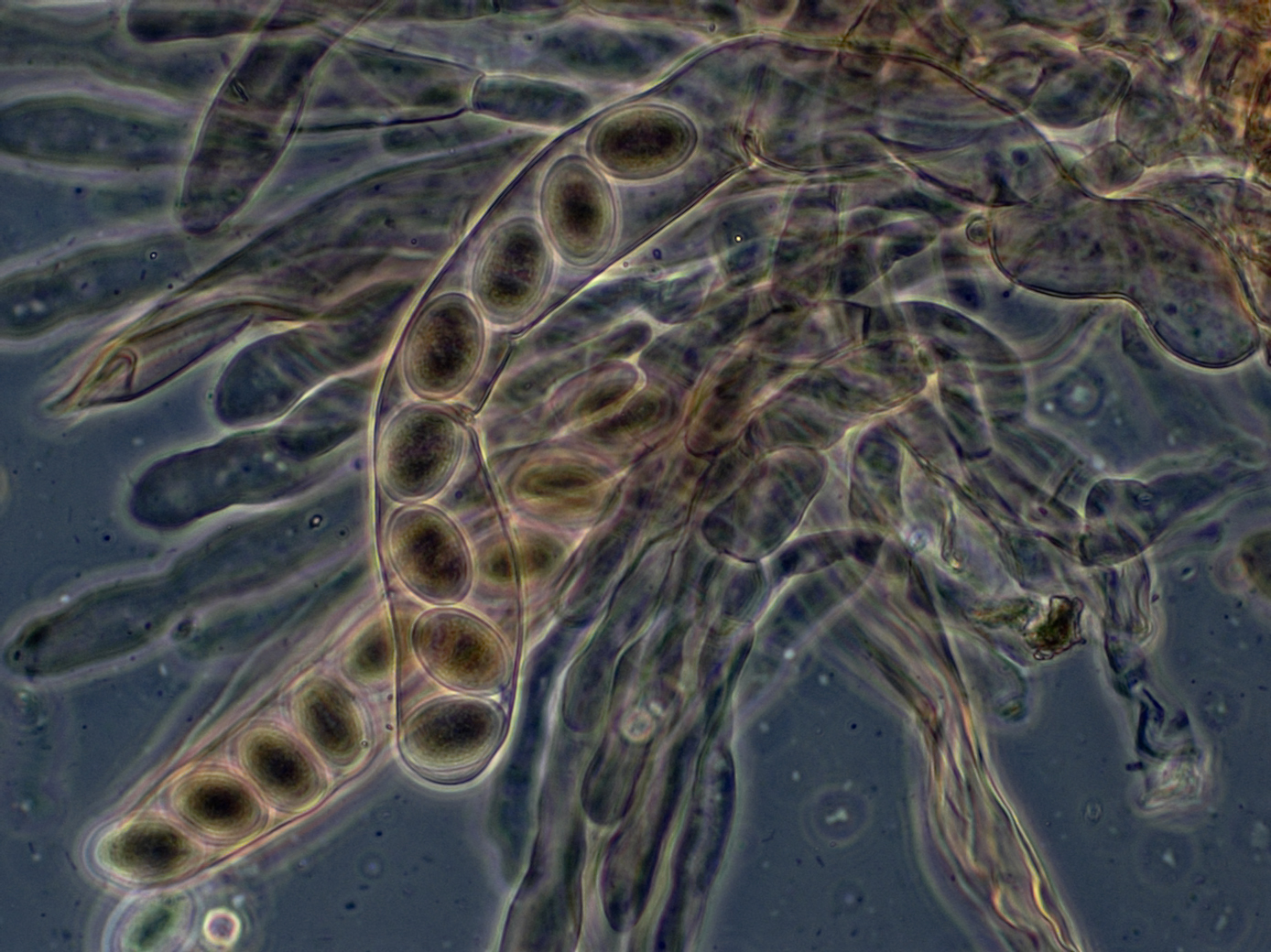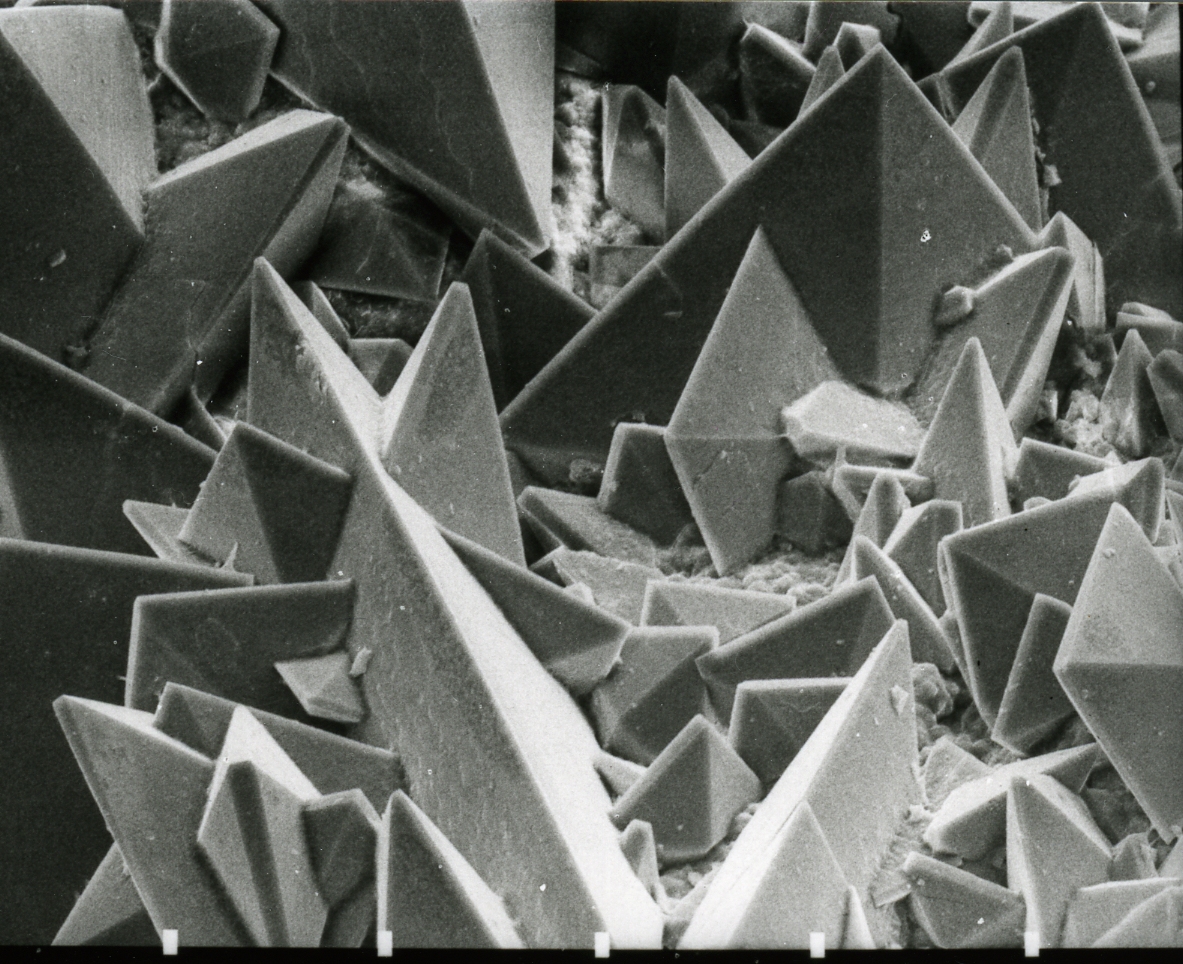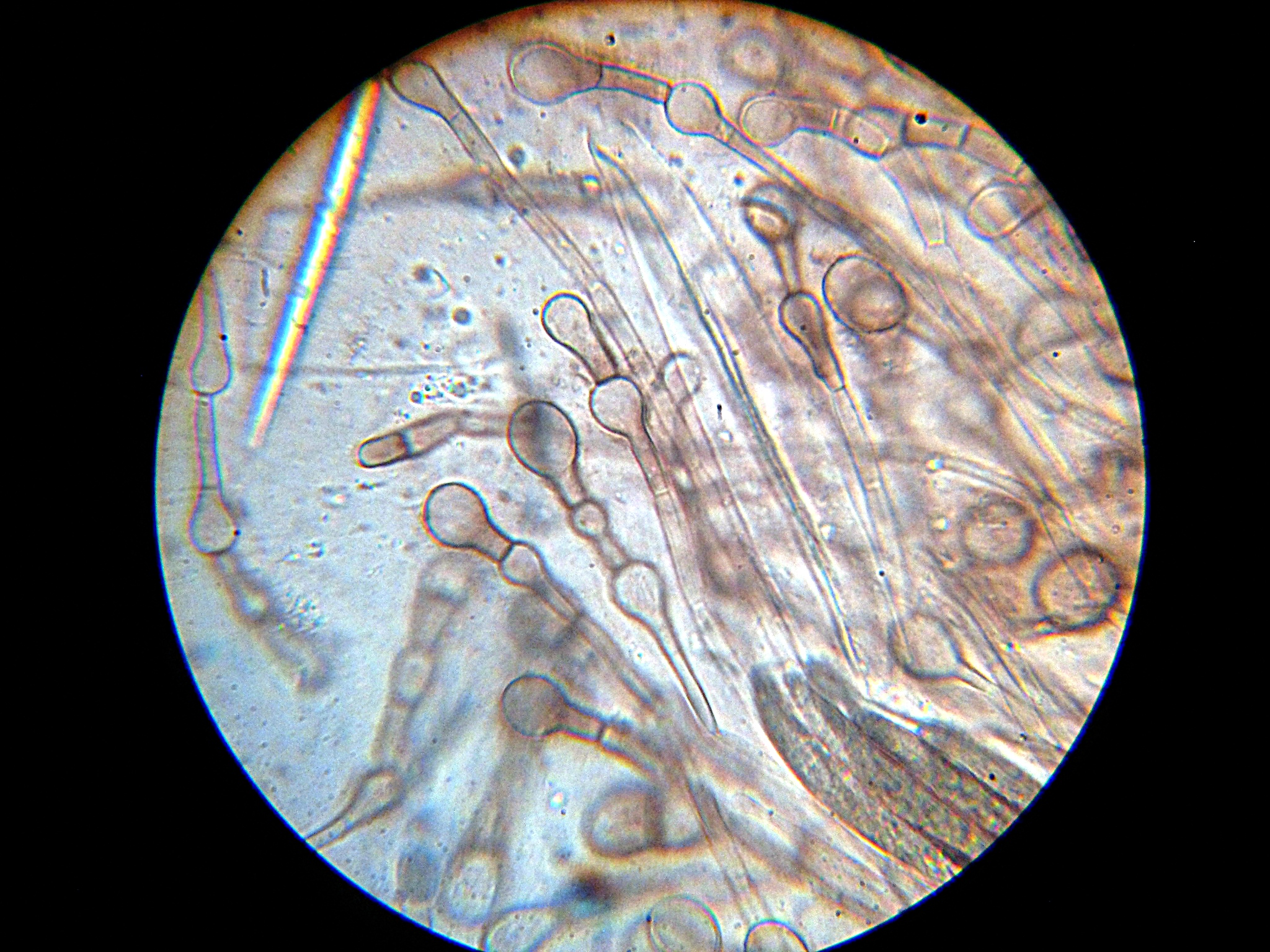|
Pycnotrema
''Pycnotrema'' is a small genus of lichen-forming fungi in the family Graphidaceae. Its two species are characterised by their small, rounded apothecial (fruiting body) pores. Taxonomy The genus was circumscribed by Eimy Rivas Plata and Robert Lücking in 2012, with ''Pycnotrema pycnoporellum'' assigned as the type species. The authors indicate that there are no well-defined that separate the genus from ''Ocellularia'' and ''Myriotrema'' (in the broad sense), but molecular analysis shows the lineage is distinct. This lichen was originally described by William Nylander in 1876 as a species of ''Thelotrema''. A second species, '' P. fissurinum'', was added to the genus in 2015. It is found in Puerto Rico. The genus name is derived from the epithet of the type species, ''pycnoporellum'', combined with the suffix ''-trema''. ''Pycnotrema'' is in the subfamily Fissurinoideae of the family Graphidaceae. Description ''Pycnotrema'' is characterised by a thallus that is light g ... [...More Info...] [...Related Items...] OR: [Wikipedia] [Google] [Baidu] |
Graphidaceae
The Graphidaceae are a family of lichens in the order Ostropales. Distribution and ecology The vast majority of Graphidaceae species are restricted to the tropics. Most Graphidaceae species are epiphytic (i.e. they grow only on plants). Genera A recent (2020) estimates places 31 genera and about 990 species in Graphidaceae. The following list indicates the genus name, the taxonomic authority, year of publication, and the number of species: *''Acanthothecis'' – 5 spp. *''Acanthotrema'' – 1 sp. *''Aggregatorygma'' – 1 sp. *''Allographa'' – 183 spp. *''Amazonotrema'' – 1 sp. *'' Ampliotrema'' – 1 sp. *'' Anomalographis'' – 2 spp. *''Anomomorpha'' – 8 spp. *''Astrochapsa'' – 29 spp. *'' Austrotrema'' – 3 spp. *'' Borinquenotrema'' – 1 sp. *'' Byssotrema'' – 1 sp. *''Carbacanthographis'' – 22 spp. *''Chapsa'' – 51 spp. *''Chroodiscus'' – 17 spp. *'' Clandestinotrema'' – 17 spp. *'' Compositrema'' – 4 spp. *'' Corticorygma'' – 1 ... [...More Info...] [...Related Items...] OR: [Wikipedia] [Google] [Baidu] |
Robert Lücking
Robert Lücking (born 1964) is a German lichenologist. He is a leading expert on foliicolous lichens–lichens that live on leaves. Life and career Born in Ulm in 1964, Lücking earned both his master's (1990) and PhD degree (1994) at the University of Ulm. Both degrees concerned the taxonomy, ecology, and biodiversity of foliicolous lichens. His graduate supervisor was mycologist and bryologist Sieghard Winkler, who had previously studied epiphyllous (upper leaf-dwelling) fungi in El Salvador and Colombia. In 1996 Lücking was awarded the Mason E. Hale award for an "outstanding doctoral thesis presented by a candidate on a lichenological theme". His thesis was titled ''Foliikole Flechten und ihre Mikrohabitatpraferenzen in einem tropischen Regenwald in Costa Rica'' ("Foliicolous lichens and their microhabitat preferences in a tropical rainforest in Costa Rica"). In this work, Lücking recorded 177 foliicolous lichen species from the shrub layer in a Costa Rican tropical forest. L ... [...More Info...] [...Related Items...] OR: [Wikipedia] [Google] [Baidu] |
Ascus
An ascus (; ) is the sexual spore-bearing cell produced in ascomycete fungi. Each ascus usually contains eight ascospores (or octad), produced by meiosis followed, in most species, by a mitotic cell division. However, asci in some genera or species can occur in numbers of one (e.g. '' Monosporascus cannonballus''), two, four, or multiples of four. In a few cases, the ascospores can bud off conidia that may fill the asci (e.g. '' Tympanis'') with hundreds of conidia, or the ascospores may fragment, e.g. some '' Cordyceps'', also filling the asci with smaller cells. Ascospores are nonmotile, usually single celled, but not infrequently may be coenocytic (lacking a septum), and in some cases coenocytic in multiple planes. Mitotic divisions within the developing spores populate each resulting cell in septate ascospores with nuclei. The term ocular chamber, or oculus, refers to the epiplasm (the portion of cytoplasm not used in ascospore formation) that is surrounded by the "bou ... [...More Info...] [...Related Items...] OR: [Wikipedia] [Google] [Baidu] |
Photosynthesis
Photosynthesis is a process used by plants and other organisms to convert light energy into chemical energy that, through cellular respiration, can later be released to fuel the organism's activities. Some of this chemical energy is stored in carbohydrate molecules, such as sugars and starches, which are synthesized from carbon dioxide and water – hence the name ''photosynthesis'', from the Greek ''phōs'' (), "light", and ''synthesis'' (), "putting together". Most plants, algae, and cyanobacteria perform photosynthesis; such organisms are called photoautotrophs. Photosynthesis is largely responsible for producing and maintaining the oxygen content of the Earth's atmosphere, and supplies most of the energy necessary for life on Earth. Although photosynthesis is performed differently by different species, the process always begins when energy from light is absorbed by proteins called reaction centers that contain green chlorophyll (and other colored) pigments/chromoph ... [...More Info...] [...Related Items...] OR: [Wikipedia] [Google] [Baidu] |
Medulla (lichenology)
The medulla is a horizontal layer within a lichen thallus. It is a loosely arranged layer of interlaced hyphae below the upper cortex and photobiont A lichen ( , ) is a composite organism that arises from algae or cyanobacteria living among filaments of multiple fungi species in a mutualistic relationship.Galloway, D.J. (1992). Flora of Australia - ''Lichen Glossary'' The medulla generally has a cottony appearance. It is the widest layer of a heteromerous lichen thallus. References Fungal morphology and anatomy Lichenology {{lichen-stub ...[...More Info...] [...Related Items...] OR: [Wikipedia] [Google] [Baidu] |
Calcium Oxalate
Calcium oxalate (in archaic terminology, oxalate of lime) is a calcium salt of oxalic acid with the chemical formula . It forms hydrates , where ''n'' varies from 1 to 3. Anhydrous and all hydrated forms are colorless or white. The monohydrate occurs naturally as the mineral whewellite, forming envelope-shaped crystals, known in plants as raphides. The two rarer hydrates are dihydrate , which occurs naturally as the mineral weddellite, and trihydrate , which occurs naturally as the mineral caoxite, are also recognized. Some foods have high quantities of calcium oxalates and can produce sores and numbing on ingestion and may even be fatal. Tribes with diets that depend highly on fruits and vegetables high in calcium oxalate, such as in Micronesia, reduce the level of it by boiling and cooking them. They are a constituent in 76% of human kidney stones. Calcium oxalate is also found in beerstone, a scale that forms on containers used in breweries. Occurrence Many plants acc ... [...More Info...] [...Related Items...] OR: [Wikipedia] [Google] [Baidu] |
Paraphyses
Paraphyses are erect sterile filament-like support structures occurring among the reproductive apparatuses of fungi, ferns, bryophytes and some thallophytes. The singular form of the word is paraphysis. In certain fungi, they are part of the fertile spore-bearing layer. More specifically, paraphyses are sterile filamentous hyphal end cells composing part of the hymenium of Ascomycota and Basidiomycota interspersed among either the asci ASCI or Asci may refer to: * Advertising Standards Council of India * Asci, the plural of ascus, in fungal anatomy * Accelerated Strategic Computing Initiative * American Society for Clinical Investigation * Argus Sour Crude Index * Association of ... or basidia respectively, and not sufficiently differentiated to be called cystidia, which are specialized, swollen, often protruding cells. The tips of paraphyses may contain the pigments which colour the hymenium. In ferns and mosses, they are filament-like structures that are found on sporang ... [...More Info...] [...Related Items...] OR: [Wikipedia] [Google] [Baidu] |
Amyloid (mycology)
In mycology a tissue or feature is said to be amyloid if it has a positive amyloid reaction when subjected to a crude chemical test using iodine as an ingredient of either Melzer's reagent or Lugol's solution, producing a blue to blue-black staining. The term "amyloid" is derived from the Latin ''amyloideus'' ("starch-like"). It refers to the fact that starch gives a similar reaction, also called an amyloid reaction. The test can be on microscopic features, such as spore walls or hyphal walls, or the apical apparatus or entire ascus wall of an ascus, or be a macroscopic reaction on tissue where a drop of the reagent is applied. Negative reactions, called inamyloid or nonamyloid, are for structures that remain pale yellow-brown or clear. A reaction producing a deep reddish to reddish-brown staining is either termed a dextrinoid reaction (pseudoamyloid is a synonym) or a hemiamyloid reaction. Melzer's reagent reactions Hemiamyloidity Hemiamyloidity in mycology refers to a specia ... [...More Info...] [...Related Items...] OR: [Wikipedia] [Google] [Baidu] |
Ellipsoid
An ellipsoid is a surface that may be obtained from a sphere by deforming it by means of directional scalings, or more generally, of an affine transformation. An ellipsoid is a quadric surface; that is, a surface that may be defined as the zero set of a polynomial of degree two in three variables. Among quadric surfaces, an ellipsoid is characterized by either of the two following properties. Every planar cross section is either an ellipse, or is empty, or is reduced to a single point (this explains the name, meaning "ellipse-like"). It is bounded, which means that it may be enclosed in a sufficiently large sphere. An ellipsoid has three pairwise perpendicular axes of symmetry which intersect at a center of symmetry, called the center of the ellipsoid. The line segments that are delimited on the axes of symmetry by the ellipsoid are called the ''principal axes'', or simply axes of the ellipsoid. If the three axes have different lengths, the figure is a triaxial ellipsoi ... [...More Info...] [...Related Items...] OR: [Wikipedia] [Google] [Baidu] |
Iodine
Iodine is a chemical element with the Symbol (chemistry), symbol I and atomic number 53. The heaviest of the stable halogens, it exists as a semi-lustrous, non-metallic solid at standard conditions that melts to form a deep violet liquid at , and boils to a violet gas at . The element was discovered by the French chemist Bernard Courtois in 1811 and was named two years later by Joseph Louis Gay-Lussac, after the Ancient Greek 'violet-coloured'. Iodine occurs in many oxidation states, including iodide (I−), iodate (), and the various periodate anions. It is the least abundant of the stable halogens, being the sixty-first most abundant element. As the heaviest essential mineral nutrient, iodine is required for the synthesis of thyroid hormones. Iodine deficiency affects about two billion people and is the leading preventable cause of intellectual disabilities. The dominant producers of iodine today are Chile and Japan. Due to its high atomic number and ease of attachment to ... [...More Info...] [...Related Items...] OR: [Wikipedia] [Google] [Baidu] |



